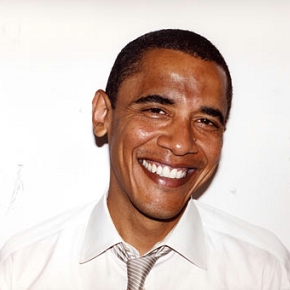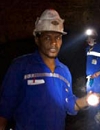The U.S.-Russian Agreement for Cooperation in the Field of Peaceful Uses of Nuclear Energy, also known as the U.S.-Russia 123 Agreement, signed for 30 years, came into force without any protest from the U.S. Congress on January 11.
The Congressmen only had to pass a resolution protesting the document's provisions to pull the plug on it, but they held their fire.
President George W. Bush submitted the 123 agreement with Russia to Congress in May 2008, but it was derailed by the August 2008 Georgian-Russian war over South Ossetia. Barack Obama made a second attempt in spring 2010.
More important than New START
This is a rare example of a good deed done without anyone having to lift a finger. According to procedure, the U.S. administration and Senate had 90 working days to review and coordinate the document. Obama sent his letter to Senate on May 10, meaning that with all the holidays, elections and recesses the Congress had until the first decade of January to reject the agreement.
Instead, it gave the green light to a document that stands to do more for the reset policy than several START agreements or even cooperation on Afghanistan. This practical contribution will transform the reset policy from a symbolic project ridden with loopholes into a practical business undertaking.
Section 123 of the U.S. Atomic Energy Act of 1954, titled "Cooperation with Other Nations," stipulates a cooperation agreement as a prerequisite for nuclear deals between the United States and any other nation. Such an agreement is called a 123 agreement.
The 123 agreement between the Untied States and Russia concerns both non-proliferation and innovative partnership in civilian sectors that "opens up new possibilities for the joint development of new technologies," U.S. Ambassador to Russia John Beyrle said.
Between them, the United States and Russia control more than 90% of the world's nuclear weapons and are recognized leaders in civilian nuclear technology and the production, enrichment, storage and disposal of nuclear fuel waste.
Things to share
The United States and Russia started carrying out information exchanges and cooperating on nuclear research back in 1973, when they signed a 10-year Agreement on Peaceful Uses of Atomic Energy (PUAE). A year later they signed a Protocol on Joint Projects in Controlled Thermonuclear Fusion and Plasma Physics. The protocol was later extended and the two countries worked together on a relief project following the Chernobyl nuclear power plant disaster in April 1986.
However, cooperation between the two powers was largely at the mercy of "political fluctuations" and there were times when it stalled for years even though the agreements between them had not been revoked or rescinded and Russia never stopped supplying low-enriched uranium to the United States.
Today the situation is entirely different. Russia was the only nuclear superpower among the 190 signatories of the 1968 Non-Proliferation Treaty with which the United States had not signed a 123 agreement. Washington has such agreements with 21 countries.
Of course, there is nothing to stop cooperation continuing in the absence of a 123 agreement. After all, 10% of all light bulbs in the United States are powered by Russian uranium. Russia currently meets 40% of the U.S. nuclear power plants' fuel requirements and has $4.9 billion worth contracts for the delivery of the necessary raw materials.
Russia supplies approximately $3 billion worth of uranium to France and Japan, countries with considerably smaller energy capabilities than the United States, which can only meet 20% of its nuclear fuel needs with internal resources.
Without a 123 agreement, rather than being open wide, the door of U.S.-Russian cooperation was only slightly ajar. Russia and the United States have a great deal of unique and mutually complementary achievements on civilian nuclear power. Moscow has developed some solutions that would take the United States years to achieve, and vice versa.
Russia leads the world in gas centrifuge uranium enrichment technology and cheap technologies for processing weapons-grade uranium into low-enriched uranium for civilian purposes as well as for recycling and storing nuclear fuel waste. Moreover, the United States does not currently have the technology necessary to build fast neutron reactors, which are known as being virtually waste-free plants.
At the same time, alongside France, the United States is one of the world's top two leaders in the creation of new protected reactor technology, energy efficient equipment, and environmental safety and transportation systems.
The innovative potential of U.S.-Russian nuclear cooperation could be truly boundless. Moreover, it could result in spinoffs that will boost development in many related industries.
Another crucial element of this particular 123 agreement is that it has the potential to revive the civilian nuclear power industry worldwide, which should be structured to prevent military uses. Besides, this agreement forms an additional obstacle to the proliferation of nuclear reactor technology because it strictly prohibits the technologies and materials involved in this international information exchange from being transferred to third countries.
Neither Russia nor the United States have transferred such technologies and materials to other countries in the past; both states honor their commitments under the Non-Proliferation Treaty (NPT). But this agreement could serve as additional encouragement for those countries that have not yet signed the NPT.
And lastly, the 123 agreement is a major innovation bonus that could revitalize the flabby U.S.-Russian reset policy.
Russia confirmed its participation in a tender to build Egypt's first nuclear power plant and said it was willing to help finance the project.
ARMZ will pay eight Australian dollars per share, which represents a 15.5 percent premium on the average market price for 20 trading days.
Russia will start building Turkey's first NPP estimated at $20 billion in 2013, Russian ambassador to Ankara Vladimir Ivanovsky said.



